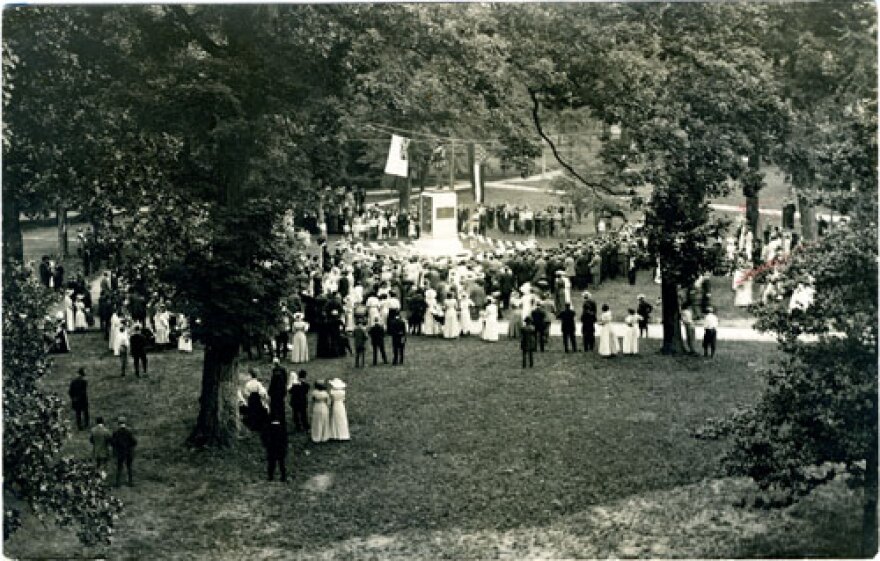On June 2nd, 1913, the University of North Carolina dedicated a memorial on its Chapel Hill campus to students who had fought for the Confederacy. A century later, Silent Sam – as the statue has come to be known – still stirs passions.
“One of our major goals is historical accuracy on the campus – really to contextualize the things that we have erected to represent us as a university and as a community,” Chapel Hill activist CJ Suitt told host Frank Stasio on The State of Things. Suitt is a member of the Real Silent Sam Coalition, which advocates for an additional plaque on the monument.
The speech delivered at the monument’s dedication one hundred years ago this Sunday was a defense of white supremacy steeped in violence, says Adam Domby, a UNC doctoral student who studies North Carolina's monuments. "The monument really says as much about North Carolina in 1913 as it does about the state in 1860,” said Domby. “What you really have is the cementing of Jim Crow in full swing."
Among those arguing for a deeper understanding of Silent Sam is Tim McMillan, a professor of African and Afro-American Studies at UNC. He leads the Black & Blue campus tour, which highlights the university's complex racial history.
“It was always really revelatory to the white students who participated in the tour that there [was] more than one way to look at…the University,” said McMillan. “The racialized history, the history of slavery – which really only started to be exposed in the 21st century by the efforts of some graduate students [and] local activists – has really changed popular opinion.”
McMillan says he’d like to see multiple signs all over campus that would “problematize” the dominant narratives around its buildings and monuments.




